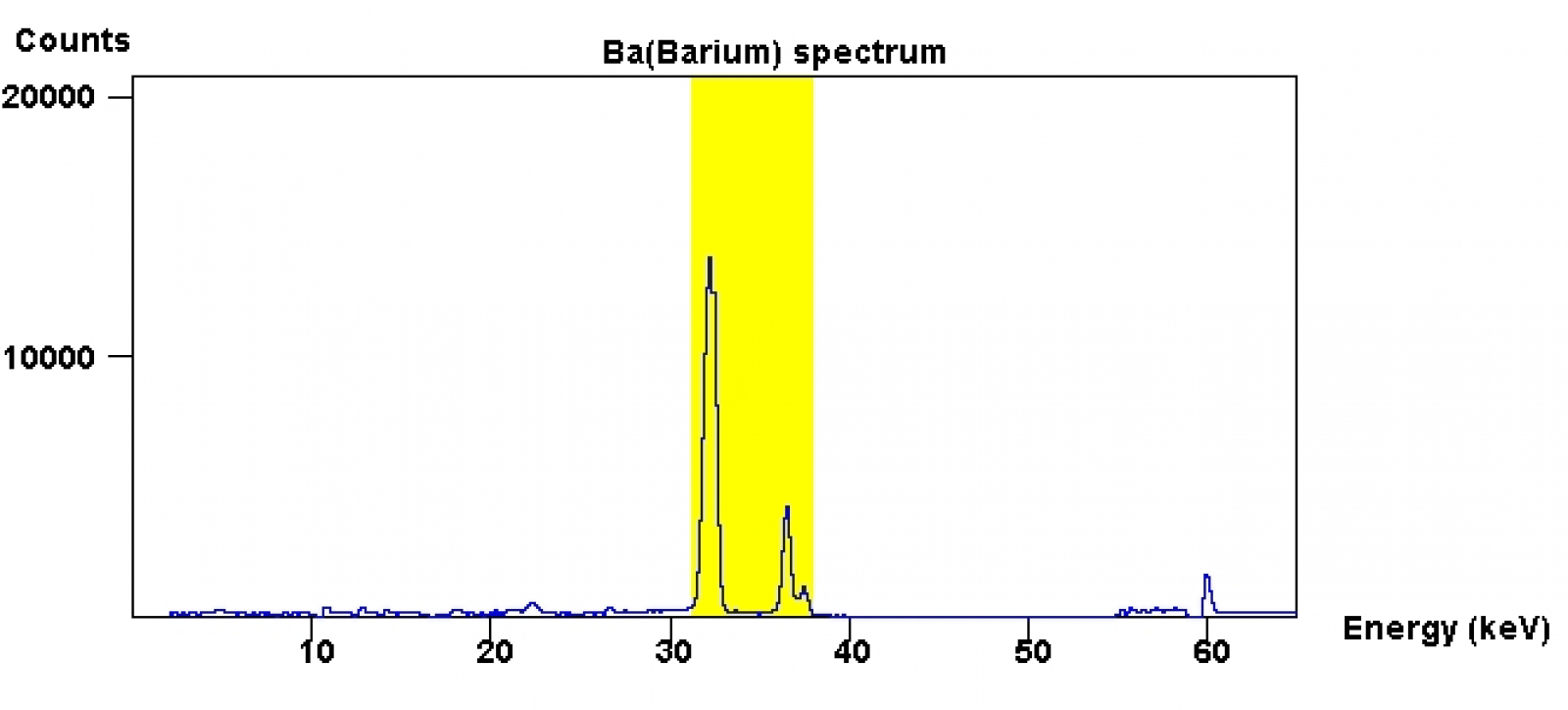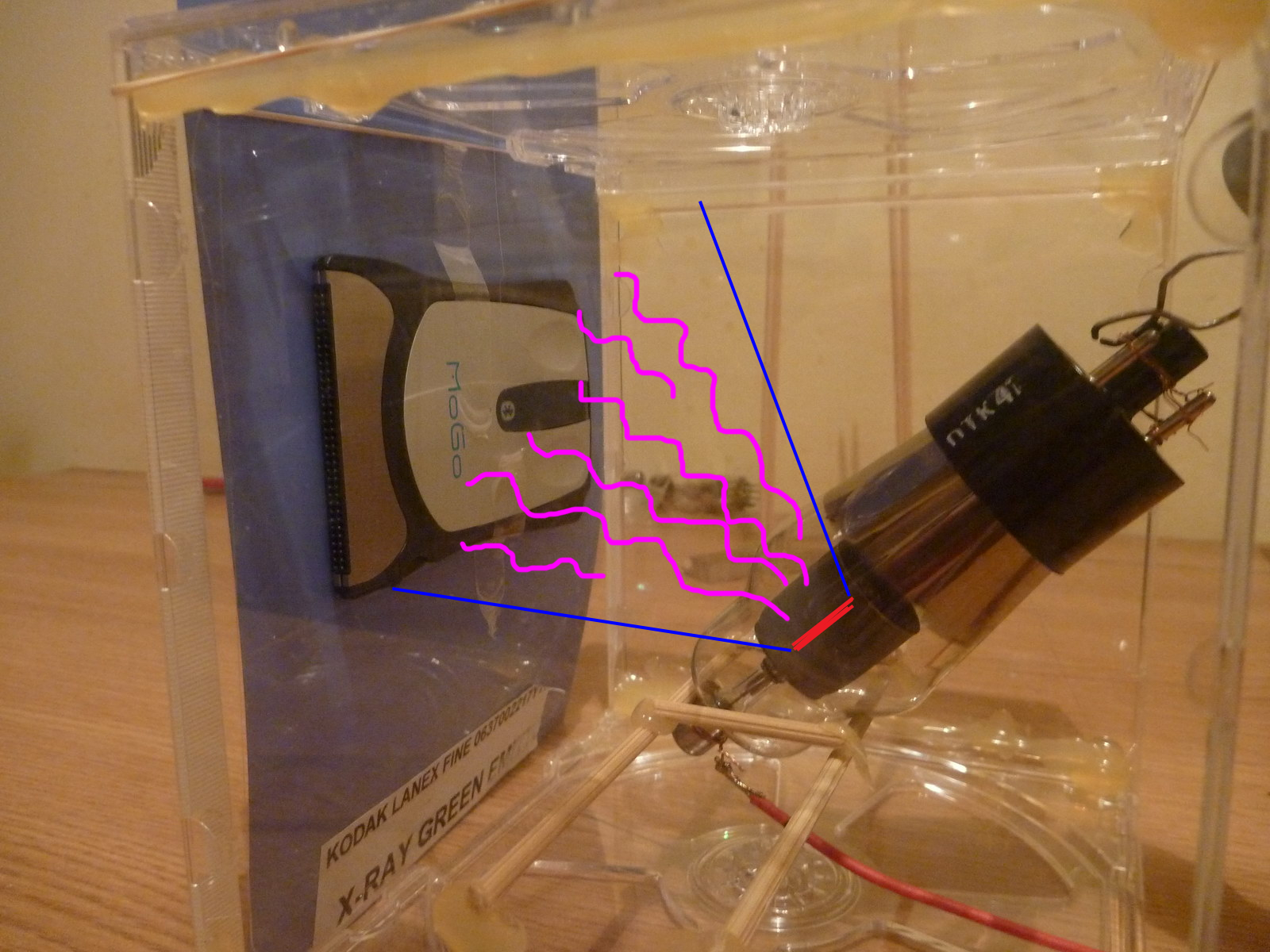X-Rays with the 2x2A
The 2x2A is a vacuum rectifier that, before the advent of the silicon diode, was used to rectify the high voltage needed for fun things such as television tubes. Now the silicon diode replaced the 2×2 nearly 40 years ago at the time of this writing, but fortunately we still have plenty of 2x2A’s floating around on ebay.Now why is this fortunate you might ask? Well, the 2x2A is very good at making x-rays! Normally, unpowered vacuum tubes are very good insulators, but they can be made conductive if a few criteria are met:- The work function of the electrode is lower than the applied EMF.- The vacuum does not contain ionizable impurities.- A sufficient current is applied which overcomes the charge lost though glass conduction (a few uA or so).Often, one electrode in a vacuum tube is electrode in a lanthanide phosphor, and heated to incandescence. This reduces the work function to only a few eV, through a process called thermionic emission. Under certain circumstances though, it’s possible to “force” electron emission from a cold cathode via something called field emission. When a high enough voltage is applied to a cold cathode, a few electrons are able to overcome the energy huge barrier and tunnel out of the metal and into the vacuum. At very high voltages, this effect becomes rather considerable.Normally field emission is unwanted because it degrades the performance of the vacuum tube, and so physicists attempt to minimize the effect by using rounded plates in the tubes they’re hired to design. However, the Russian 2x2A wasn’t designed very well at all, and has a very sharp anode. Though bad for the soviets, it’s nice for experimenters like us. This radiation is entirely a Bremsstrahlung spectrum, since it’s not possible to get a tungsten K-line at 50kV. If the cathode contains barium though, we should see some peaks from that.
This radiation is entirely a Bremsstrahlung spectrum, since it’s not possible to get a tungsten K-line at 50kV. If the cathode contains barium though, we should see some peaks from that. The emission band from the 2x2A looks to be at a 45 degree angle, with the bisector perpendicular to the tube. While it sounds intuitive to use the tube in a vertical position, in fact it turns out that better images are obtained when the rectifier is inverted at a 45 degree angle relative to the floor. This orientation provided the clearest radiographs and the largest useful beam.
The emission band from the 2x2A looks to be at a 45 degree angle, with the bisector perpendicular to the tube. While it sounds intuitive to use the tube in a vertical position, in fact it turns out that better images are obtained when the rectifier is inverted at a 45 degree angle relative to the floor. This orientation provided the clearest radiographs and the largest useful beam. With an intensifying screen and a long exposure, some very nice radiographs can be obtained. Almost as crisp as ones made with a coolidge tube!
With an intensifying screen and a long exposure, some very nice radiographs can be obtained. Almost as crisp as ones made with a coolidge tube!
Light Emitting Diode
In order to force electrons out of the bell, we’ll need a very high EM pressure; something which is easily obtained from a DC flyback transformer. With the anode grounded, a high [50kv] potential to the cathode should induce field emission, whereby the freed electrons can happily fly toward the dense tungsten cathode and potentially make some x-rays.And in fact, they do!As the 2x2A wasn’t designed to generate x-rays, it doesn’t make a nice beam like a Coolidge tube would. Instead, a uniform ring of diffuse x-radiation emanates from the tube, as can be seen by this image of an calcium tungstate screen wrapped around the tube.


